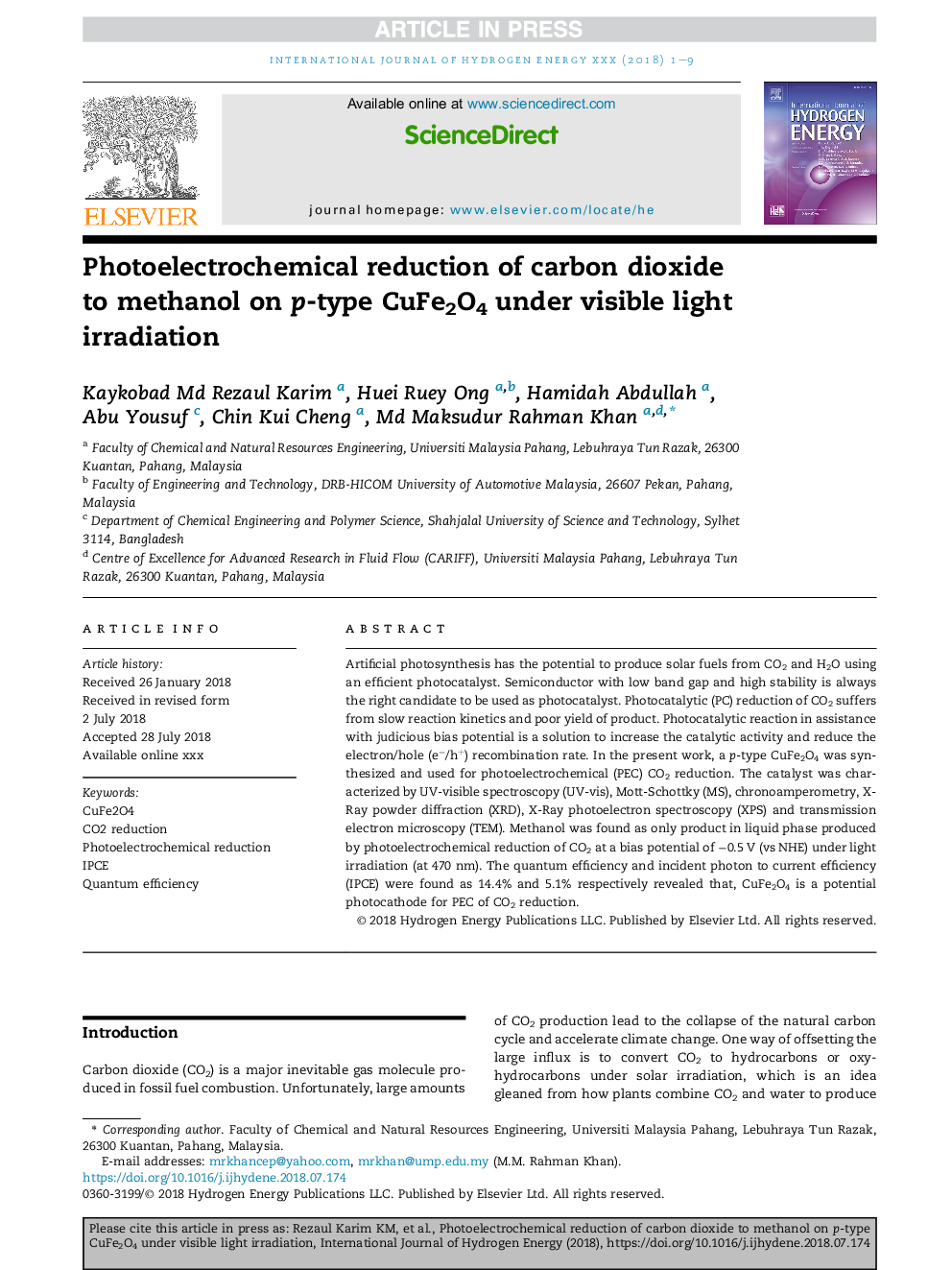| Article ID | Journal | Published Year | Pages | File Type |
|---|---|---|---|---|
| 10154629 | International Journal of Hydrogen Energy | 2018 | 9 Pages |
Abstract
Artificial photosynthesis has the potential to produce solar fuels from CO2 and H2O using an efficient photocatalyst. Semiconductor with low band gap and high stability is always the right candidate to be used as photocatalyst. Photocatalytic (PC) reduction of CO2 suffers from slow reaction kinetics and poor yield of product. Photocatalytic reaction in assistance with judicious bias potential is a solution to increase the catalytic activity and reduce the electron/hole (eâ/h+) recombination rate. In the present work, a p-type CuFe2O4 was synthesized and used for photoelectrochemical (PEC) CO2 reduction. The catalyst was characterized by UV-visible spectroscopy (UV-vis), Mott-Schottky (MS), chronoamperometry, X-Ray powder diffraction (XRD), X-Ray photoelectron spectroscopy (XPS) and transmission electron microscopy (TEM). Methanol was found as only product in liquid phase produced by photoelectrochemical reduction of CO2 at a bias potential of â0.5Â V (vs NHE) under light irradiation (at 470Â nm). The quantum efficiency and incident photon to current efficiency (IPCE) were found as 14.4% and 5.1% respectively revealed that, CuFe2O4 is a potential photocathode for PEC of CO2 reduction.
Related Topics
Physical Sciences and Engineering
Chemistry
Electrochemistry
Authors
Kaykobad Md Rezaul Karim, Huei Ruey Ong, Hamidah Abdullah, Abu Yousuf, Chin Kui Cheng, Md Maksudur Rahman Khan,
